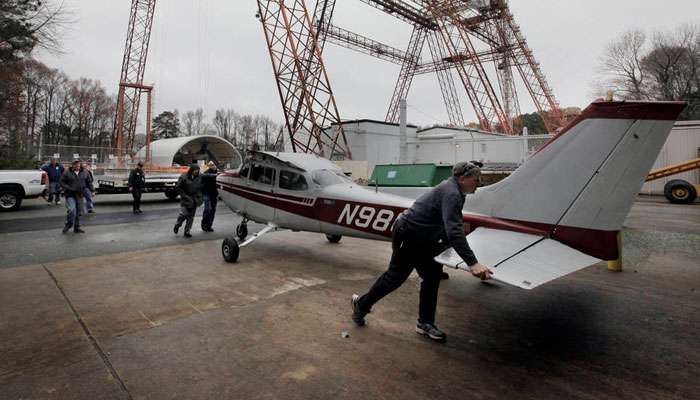-
Tips for becoming a good boxer - November 6, 2020
-
7 expert tips for making your hens night a memorable one - November 6, 2020
-
5 reasons to host your Christmas party on a cruise boat - November 6, 2020
-
What to do when you’re charged with a crime - November 6, 2020
-
Should you get one or multiple dogs? Here’s all you need to know - November 3, 2020
-
A Guide: How to Build Your Very Own Magic Mirror - February 14, 2019
-
Our Top Inspirational Baseball Stars - November 24, 2018
-
Five Tech Tools That Will Help You Turn Your Blog into a Business - November 24, 2018
-
How to Indulge on Vacation without Expanding Your Waist - November 9, 2018
-
5 Strategies for Businesses to Appeal to Today’s Increasingly Mobile-Crazed Customers - November 9, 2018
NASA Plans to Crash Plane for Science
Aboard will be five emergency locator transmitters, data-collecting sensors – and two crash-test dummies, NASA said.
Advertisement
General aviation and commercial planes carry emergency locator transmitters that should work in the extreme circumstances and broadcast a location signal in the event of a crash.
On August. 26, NASA will put new emergency location transmitters to the test when they drop an airplane outfitted with the devices.
The third crash will be staged on Wednesday at the Langley Research Center in Hampton, Virginia between 1 and 2 p.m. It will be streamed live online at NASA TV.
Orbiting satellites are being sent that signal by current ELT models. The signal is then reflected to the search and rescue (SAR) ground station.
NASA’s research is aiming to find practical ways to improve ELTs by testing how they react to excessive vibration, fire and impact damage. The endeavor will certainly help rescuers save many lives. It will eventually crash with its tail down into soil.
The latest trial is the last of three crash tests conducted on three different Cessna 172s, under varying conditions. During the first test, a plane was dropped from about 80 feet and came in at nose level on concrete.
Advertisement
In the second test, the aircraft was crashed nose down on to soil from 100ft height.




























